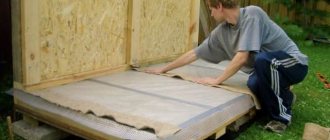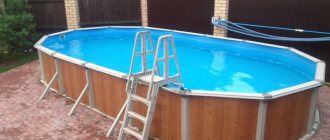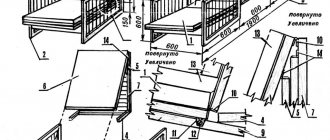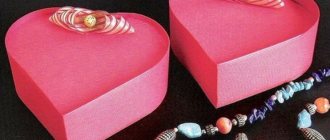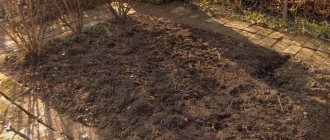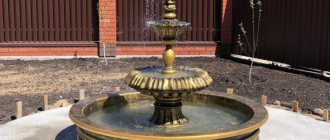Where should a dog's enclosure be located?
The most important thing is to choose a place to build an enclosure on your site. You should not place the enclosure in the most remote part of the yard. There is a great opportunity to regret what you have done, because a dog that is isolated from society will worry and bark loudly.
A dog enclosure would also be superfluous next to a fence: in this case, your dog will be interested in people passing by. And if the dog is large, it can easily jump over the fence, for example, in winter, choosing a snowdrift as a fulcrum. This could end in trouble for both of you.
The best place for an enclosure is at the front of the yard. The dog enclosure will be located near the gate to the house and next to the path. This way, the dog will be able to observe what is happening around him, but at the same time will be quite isolated in his shelter.
Provide your four-legged friend with good living conditions. After all, building an enclosure is a serious matter and should be approached with special responsibility. Before starting construction work, you should consider:
- dog breed;
- pet's age;
- gender of the dog;
- location of the site;
- compass rose
Choosing a suitable location for the enclosure
Before you build a dog enclosure, you need to find a suitable place to place it. As with construction, a certain number of rules must also be observed here, namely:
- The enclosure should be located as far as possible from various noise sources. Passers-by on the street, loud neighbors, cars, all of this, to one degree or another, can cause concern for your beloved pet. A short distance from the porch of the house (7-10 meters) will be an ideal location for a dog enclosure.
- Lowland is also an extremely undesirable place to build an enclosure. After heavy rains, all the water from the site will accumulate there, turning the area into a real swamp. A solution to the problem may be drainage ditches or installation of storm drainage on the site, but this will lead to additional financial costs.
- A dog, like a person, does not tolerate foul odors very well, the source of which can be: sewerage, a compost pit, fertilizer from the garden, a trash can located next to the enclosure, etc. Try to plan the structure so that it is located as far as possible from the data foul-smelling sources.
- To prevent your dog from getting too hot in the summer, you should position the enclosure so that its front part faces the east or west. If this is not possible, plant a small tree near the building that will protect your four-legged companion from bright sunlight.
Stationary dog enclosure made in beautiful colors
A small insulated enclosure that is perfect for a medium-sized dog
If necessary, the stationary enclosure can be moved to any suitable place
In order not to lose sight of any little detail, at the initial design stage it is advisable to draw a detailed plan (drawing) of the future enclosure. It must contain information about the size of the structure, the materials from which it will be made, its location, the location of internal zones, etc.
DIY enclosure construction - drawing
What should a dog's enclosure look like?
The main requirement for building an enclosure is as follows: remember that you are building a house for your dog and it should be comfortable, cozy and calm. In the enclosure, the dog should feel warm and dry. After all, the dog not only sleeps or eats there. He also plays there, rests, and guards the territory.
Your dog should have plenty of room to move around inside the enclosure, so:
- an enclosure for a beagle, spaniel, shiba inu or other medium breeds no more than 50 cm at the withers, the area must be at least six square meters;
- an enclosure for a husky or Labrador, as well as other dogs whose height at the withers reaches 65-70 cm, you need to build an enclosure with an area of at least eight meters;
- the enclosure for a Caucasian or Central Asian Shepherd, Alabai should be very large: at least ten square meters. Preferably more.
We have decided on the size of the area. What about the gender of the animal? The requirements for a bitch and a dog are completely different. A female individual needs a maternity room and a vestibule, which will be located in the enclosure. It should be protected as much as possible from bad weather, because the bitch will give birth to puppies and they will not be in the kennel, but will begin to move around the entire area for their games.
A male dog needs a large and reliable kennel; he is physically strong and strong. A large and strong male is able to knock out a lock or break an enclosure, so he must be strong.
Features of an enclosure for a shepherd
Having decided to build an enclosure for a shepherd dog with your own hands, you need to take into account a number of requests that are inherent in residences for large dogs:
Note!
Insulate the foundation with your own hands - a step-by-step description of the use of the best materials and technologies (90 photos)
Laying laminate flooring with your own hands: a detailed description of how to lay laminate flooring. Laminate calculation, step-by-step description and installation secrets (105 photos and videos)
Do-it-yourself chimney - a detailed description of how and what to build an effective chimney from (110 photos)
- spacious paddock area (more than 10 sq. m);
- high walls (not lower than 2.5 - 3 m);
- three open walls and one blank;
- insulated cement floor with plank covering;
- presence of a roof.
Features of the structure of walls, floor and roof in a dog enclosure
If the enclosure is being built for a dog that will always live in the yard, it is important to protect it from drafts and lock the adjacent and rear wall of the enclosure. To build these walls it is better to use:
- wooden board;
- thick tongue and groove board in metal frames;
- brick;
- monolithic concrete;
- cinder block.
The open wall should face south, southeast, southwest. It is made from metal rods.
Important! It is better to use rods rather than mesh. It will be more expensive in price, but will last longer. The mesh will break after some time.
The gate is made using a metal frame and iron rods. How should the enclosure be closed? Remember, dogs are smart and cunning creatures. They open many locks with ease. The lock must be secure and located outside.
Provide your dog with a warm, dry floor. The best option for flooring is wood. A floor made of thick planks is durable and will provide protection from drafts. The base can be made of concrete, but in this case it is necessary to have a wooden flooring with ventilation from below.
Important! Asphalt, concrete and other similar surfaces can be harmful to your dog's nails and joints.
The boards need to be treated with special products to protect them from mold and rot, and care should be taken to ensure that there are no knots or nails on them, because the dog can get hurt.
You can make wooden flooring in the form of a panel structure. In this case, you first need to assemble a metal frame from a profiled pipe. Then cover it with boards at least 40 mm thick.
When installing the floor, pay attention to the fact that the boards should not sag and there should be no gaps between them. Otherwise, the dog will easily get his claw in there. The bottom of the boards should always be open, this will prevent rotting processes. It is best to waterproof the soil under the flooring using a material such as roofing felt.
In order to create the required gap, it will be necessary to raise the flooring onto a stand, the brickwork will serve as a support.
Important! The floor in the enclosure should be sloping from the side walls to the center and towards the front.
There are no special requirements for the roof; the only important thing is the presence of a large canopy. It can be made from absolutely any roofing material. For example, from:
- metal tiles;
- slate;
- soft roof;
- profiled sheet.
The best roofing will be one that not only protects the dog from precipitation, but also has high sound insulation. The slope of the roof should be in the direction of drainage. This way, water will not accumulate under the decking.
The general condition for keeping a dog in an enclosure is the presence of a place for walking and a spacious kennel. The kennel should not be huge, but nevertheless, the dog should sleep comfortably in it, stretching out his whole body. In cold weather, the dog should warm the house from the inside with its warmth. Having a place to walk is also necessary so that the dog can relieve itself. And also run or stretch. There may be a vestibule next to the booth: the dog’s personal belongings can be stored inside it. For example, toys, bones, bowls. There is also a maternity kennel for puppies.
Start of construction
If the necessary space that can be given to the animal is available, but there are not enough funds or there is a desire, you can build the structure yourself.
It is important to initially determine the exact location and dimensions of the future enclosure. Don’t forget about convenience for both yourself and your pet.
In private areas, it is better to install an enclosure close to the house so that the dog can observe what is happening; the pet should not be lonely, he should not be nervous, otherwise you will listen to howling and causeless barking around the clock.
It is also not recommended to install a dog walking area along the fence adjacent to the road. Every person passing by or a car rushing by will disturb the dog, regardless of whether it sees them or not, they are especially interested in animals freely walking nearby, and besides, the pet may scare someone or try to run away.
Experienced dog owners and veterinarians recommend arranging the enclosure so that it is located in the area of the gate, from where the house can be seen, but not directly adjacent to the street.
It is also useful to protect from gusts of wind by planting shrubs along the structure, which in hot weather will additionally create shady areas, and this is very important for large animals.
With a thoughtful approach, the design will be reliable and there will be no need for alteration. The animal will feel comfortable, which is also important for the owner who is attached to it.
Drawings for building a dog enclosure with your own hands
Once you have decided on the size of the enclosure, make a drawing. To do this, you can use a ready-made project or make it according to your own idea. After the drawing is ready, take care of the building materials to build the enclosure.
Making an enclosure for your favorite four-legged pet is not at all difficult! It will be great if you have welding equipment. However, you can also use an ordinary hammer drill.
To construct the structure you will need:
- metal corner;
- iron rod or ready-made forged lattice;
- roofing material;
- wood for decoration;
- dog house.
Preparatory work
After you have made it yourself or found the drawings of a dog enclosure that suit you on the Internet, you need to choose a place to build it.
Please read the following recommendations carefully:- Do not place the pen in an overly noisy place. Such placement will adversely affect the pet's behavior.
- The enclosure should be visible from the entrance to the house.
- It is highly undesirable to place a dog's residence in a low-lying area of the yard. In this case, it will be difficult for the dog to monitor the situation in the area. In addition, such an enclosure will always feel damp, which is very harmful for the animal.
- It is forbidden to install a pen for a pet near sources of unpleasant odor - its sense of smell may deteriorate.
The process of building a dog enclosure
The drawing is ready, the location of the enclosure and its dimensions have been determined, building materials have been purchased, which means it’s time to move on to the process itself. Construction must begin by driving corners into the ground along the perimeter of the future dog enclosure. First, weld the transverse corner horizontally. It is he who will fasten the vertical corners together. When installing the structure, remember that you need to choose a location for the gate. And also provide a cutout at the bottom of the grille. It is likely that the dog will have to be fed to strangers, and it may be aggressive.
Next, start building the floor. You shouldn’t leave it grounded because the dog can easily dig underneath and run away. The back and side walls will need to be covered with boards. The wall can also be slate or plastic. However, wood is the most reliable and environmentally friendly option. These walls must be constructed of dense material to avoid drafts and prevent the dog from catching a cold.
Next, install metal rods or metal mesh on other walls. You can make a roof just over the booth or around the entire perimeter of your pet’s enclosure. If possibilities allow, you can use a fence as two wooden walls.
The lattice can be welded to the fence. But if you don’t have a welding device, proceed as follows:
- drive the rods into the ground at a distance of ten centimeters between each other;
- purchase wooden beams and make notches on them, the depth of the notches should correspond to the width of the iron rod;
- attach the timber to the rods so that each rod fits into the notch;
- secure with a corner (we drill holes in the beam and the corner and fasten with bolts).
If you follow the procedure in this way, the grill will come out strong and reliable. The door at the gate will need to be secured with hinges or bolts. It is worth making two locks: a latch and a padlock. The latch can be made outside and inside. For example, if work is being carried out to install a kennel and the owner will need to lock the dog inside the structure.
Requirements for materials for construction
DIY dog house: drawings and dimensions
The construction of a dog enclosure is carried out in several stages. Each specific part of the structure is made separately from a specific type of material:
- the foundation is usually poured from a cement-sand mixture and reinforced with metal reinforcement;
- the floor is made of concrete or wood. It is necessary to make a flooring on top of the concrete, since the covering is bad for the joints and claws of dogs. In both cases, wooden boards are sanded, treated with antifungal substances, and varnished. The coating must be resistant to moisture and safe for the animal;
- Solid walls and partitions are made of wood. Suitable materials include lining, boards or sandwich panels. The wall for an open view in the walking area is made of chain-link mesh, profile pipes, metal pipes or forged elements. When choosing materials, you should pay attention not only to cost, but also to think about the safety of the dog. A mesh covering is cheaper than metal rods, but if a dog tries to chew through it, it can damage its teeth;
- It is better to make the roof from a soft, lightweight material that will not create loud noise and frighten the pet during precipitation.
Kennel and place for feeding the dog
Be responsible when building or purchasing a booth. After all, this is your pet’s home, shelter and place to sleep. Consider the following nuances:
- the size of the booth should be suitable for the size of the pet;
- inside the dog should be able to turn around and stretch out;
- The dog does not need a lot of space, such a booth will be cold;
- use coniferous trees for the walls of the booth;
- if the climate is harsh, additionally insulate the walls;
- make the roof of the kennel removable, so you can easily reach the dog or get it out of the kennel in case of illness;
- It is better to make the roof flat - for the dog it is an observation point for what is happening;
- make sure that the dog does not leave the enclosure using the booth as an aid.
Set up a feeding area closer to the fence. It is better to make or purchase a special table with recesses for bowls for water and food.
Is an aviary needed in an apartment?
First, a little theory: is an aviary needed in an apartment and what is it intended for? All dog breeders will answer unequivocally: an enclosure is simply necessary, and its presence is required at different stages of the dog’s maturation.
The reasons for installing a fence are:
- Purchasing a puppy, which entails damage to wallpaper and interior items if kept freely.
- The period of bearing offspring and feeding babies.
- The period of illness or postoperative recovery stage.
- Introductory period for toilet training your baby.
In addition, a portable enclosure is necessary when going outdoors, when the dog needs a protected space.
Purchasing a puppy is difficult not only for the owner of the apartment, but also for the pet itself. Most often, in a stressful situation, puppies look for a remote corner instead of the designated toilet and do their business there. Installing an enclosure can prevent contamination of the entire apartment, and provide the puppy with gradual adaptation, not only to the new owners, but also to the place of residence.
Create a drawing
Before starting work, you need to create a plan for further action. In this case, drawings of an enclosure for dogs will be the optimal solution. They will allow you to foresee any nuances of the work. It needs to take into account the presence of a foundation. This is not always necessary if the dog will not live there permanently.
Zones need to be demarcated. Mark where the wooden platform will be located. The animal itself will live there and the booth will be located there. The place where the dog will eat can be laid out using tiles or wooden boards. Dog walking is a special place, decorated with grass or soil.
The presence of a separate booth needs to be thought out in advance. In some cases you can do without it. If the enclosure is completely open, then a booth is required. If the enclosure is built with blocks that can protect from wind and frost, then the booth is not built.
Floor or soil?
Purchased enclosures are often simply placed on the ground; The dog relieves its physiological needs on it. The floor of the enclosure needs to be cleaned of traces of its vital activity, but the dog is able to dig a hole in the ground and leave the enclosure. How can we be here?
Firstly, northern dogs dig the ground in exceptional cases. Their digging reflex is very weak, because... They have permafrost in their homeland. If a husky, husky or labrador is regularly walked or let out on patrol, you don’t have to be afraid of undermining from them. Secondly, at one time J. Darrell came up with a way to develop toilet skills in almost any mammal, even a wild African pig:
- Prepare a small enamel vessel of suitable size for the dog’s latrine: a basin, a foot bath with a sealed drain, a large bowl.
- When building an enclosure, away from the booth and feeder (see below), a cutout is made in the floor for installing a toilet bowl.
- The cutout for the toilet is temporarily sewn up with plywood.
- During the period of training to the enclosure, the dog is given the opportunity to relieve itself wherever it wants.
- When it gets used to it, a pile of fresher droppings is taken for temporary storage.
- The enclosure is being thoroughly cleaned.
- They remove the plywood, put the toilet in place and fill it halfway with sand.
- They put the saved lump of droppings in the toilet and let the dog into the enclosure.
This method works flawlessly: after all, animals mark their territory with urine and excrement. Now the dog will only go to the toilet in a big way. The sand in it is needed to satisfy the instinct to bury waste; it needs to be changed from time to time.
Note: kennel for burrowing dogs, e.g. fox terrier must have a floor.
Feeder
Making a dog feeder in the enclosure rotating at floor level (on the left in the figure) in order to demonstrate your mechanical skills is a serious mistake. A funny thing provokes the animal to play with it, which is dangerous for the dog. The feeder should be made folding with the bottom edge approximately at the height of the lower edge of the dog’s chest, as on the right in Fig.
Feeders in dog enclosures
Roof
The roof of the dog enclosure must have a gap for ventilation. Walk in on a hot summer day with a gentle breeze from the yard onto the veranda. Is it stuffy there? Now imagine that you are covered in fur from head to toe. Let us repeat once again: heat and stuffiness are much more harmful for a dog than bitter cold.
As for what to lay the roof of the enclosure from, here is the basic rule: the roofing material should not resonate in the rain or wind. A dog's hearing is as sensitive as its sense of smell; Frequently repeated sharp sounds can damage it. The best materials for the roof of an enclosure are sound-absorbing: roofing felt, soft tiles. It’s easier to lay them on the sheathing.
Note: the scraps of timber from the construction of the wooden enclosure came in handy - they were used to create a ventilation gap under the roof. The sheathing is of the usual type, but it won’t hurt to insulate it. Not for the winter, but for the summer, so that the roof, heated by the sun, does not radiate heat downwards as much.
Lattice
Cross members from the same rod must be welded to the grid of the enclosure made of rods with a vertical pitch of 1-1.3 m. Usually one cross member is placed at half the height of the rods. In an enclosure for a shepherd dog, it is better to install two crossbars, respectively. by reducing the installation step. The German Shepherd is not the champion of strength among its relatives; the Caucasian and Central Asian are stronger. But an adult male German Shepherd pushes apart 10x10 bars 1.5 m long.
Special Husky Cases
This intelligent, loyal and disciplined dog is becoming increasingly popular. If reindeer-hunting huskies do not make watchmen, and hunting dogs are produced occasionally (although all of them are outstanding), then the husky can be called a jack-of-all-trades dog. However, a husky enclosure should have a number of features.
First, the enclosure for a husky needs a height of 2.2 m. The husky dog is a very jumping dog; in their homeland they need it so much to look around over the endless snow. A husky jumps almost like a poodle, and he, for your information, jumps from the floor onto the cabinet without a run.
Secondly, the bars of the husky enclosure should be made not from rods, but from mesh. Jumping, the husky clings to it. If the bars of the husky's enclosure are made of twigs, then it will be impossible for the dog to do the physical exercises it needs. Finally, in mid-latitudes and to the south, it is better to have a husky enclosure facing north, northeast and northwest.
About the grid
Dog enclosures with mesh bars
A mesh lattice instead of rods is also suitable in an enclosure for dogs of other breeds. It is better to place a wicker mesh grille in the enclosure, pos. 1 in Fig. on right. For a husky, this is all the more good because the wires of the woven mesh are bent in a zigzag and are easier to cling to. But welded mesh will also work, pos. 2. In both cases, the wire diameter is from 4 mm, and the mesh is 10x10 cm for large dogs and from 5x5 to 7x7 for small ones.
It is not advisable to use chain-link mesh to lattice enclosures: even very calm dogs often injure their paws on it, and hair plucked by chain-link is a common occurrence in such enclosures. By the way, chain-link is safe for a husky, this dog is so smart. She is too smart for a chain-link enclosure: she unravels the joints, tears them off the frames and leaves the enclosure in an hour and a half. The only time an enclosure for a dog made of chain-link mesh is justified is when its area is more than 20 square meters. m, and the dog is a guard breed, i.e. very disciplined, and trained by a good dog handler.
Preliminary activities
Initially, you need to think about where the pet itself will be located. For this location, a number of conditions must be taken into account.
- The enclosure should not be located next to noisy objects or a fence. Near busy streets, the dog will begin to bark constantly and prevent the owners from living a quiet life.
- It is better to equip a building near the front door. The enclosure is built on a hill. The dog must see what is happening on the site, so she feels calmer.
- You need to clearly think about what materials are taken for the enclosures in order to buy them in the store in advance. Initially, I thought through everything to the smallest detail.
In the lowlands, the enclosure will flood during the rainy season. Spaces such as the compost pit should be located away from the enclosure. Over time, your dog will develop problems with his sense of smell. The western or eastern side is perfect for the entrance. It will be very hot in a southern dog.
